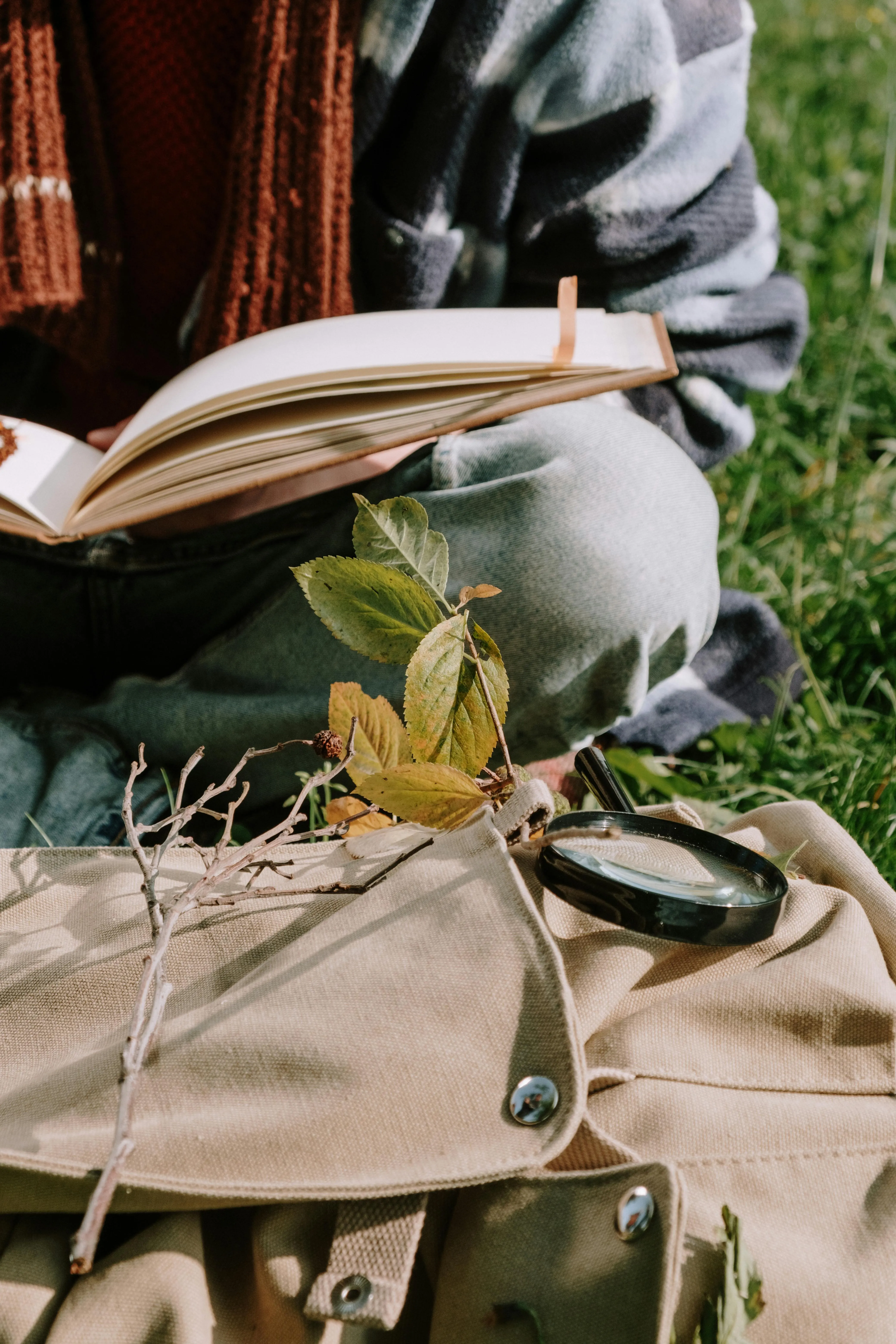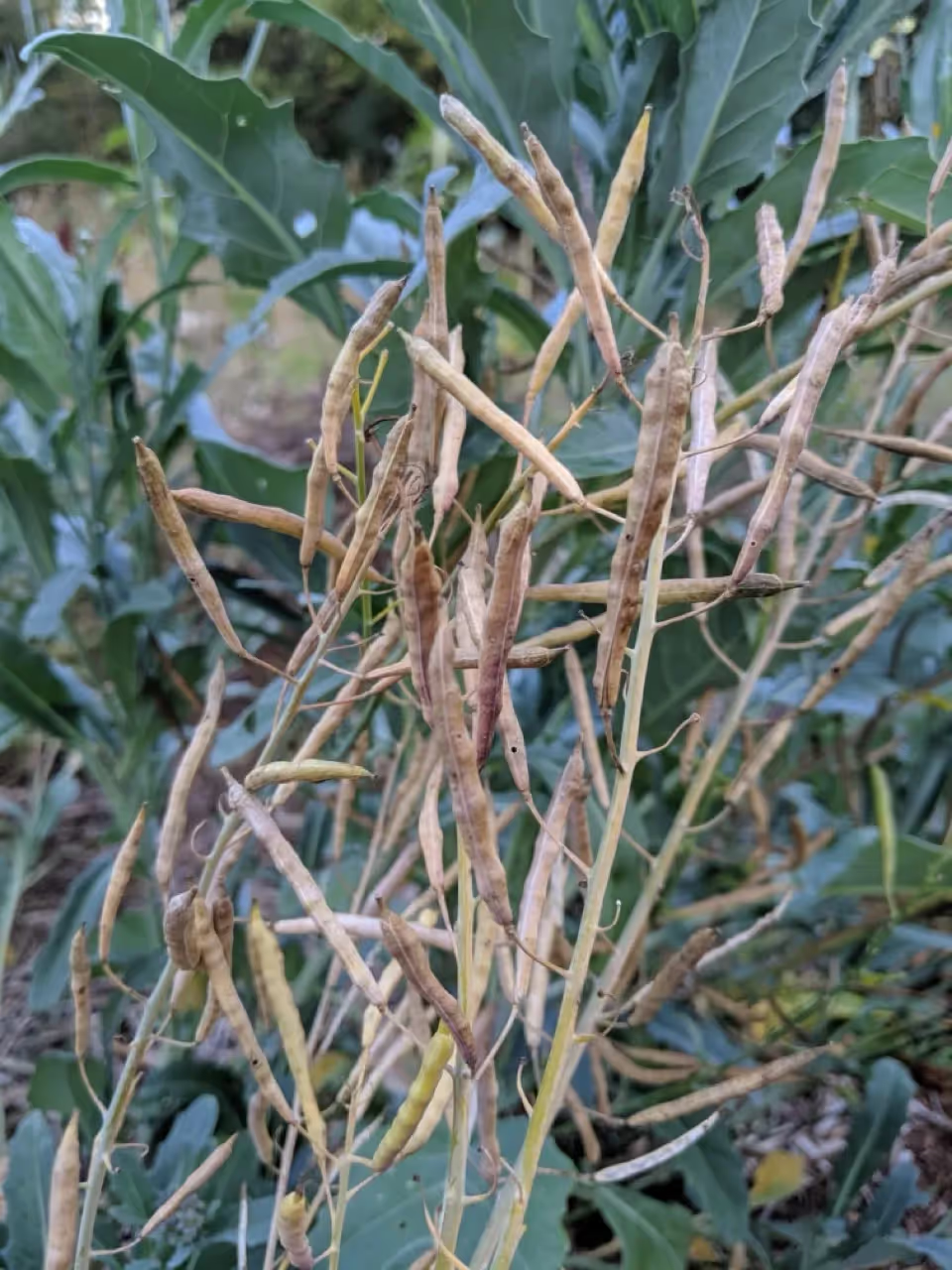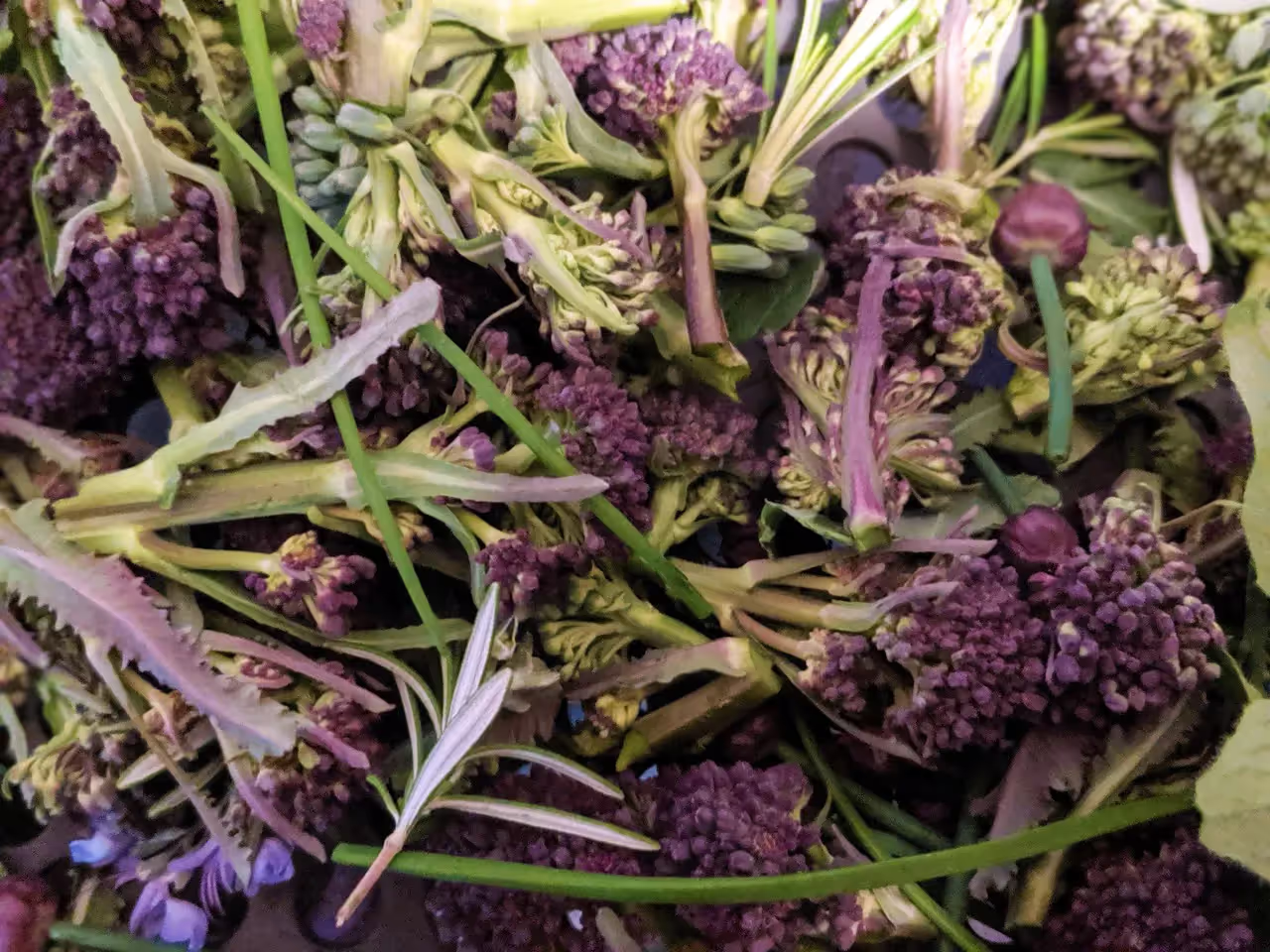
Be a Land Steward.
Sign up for Greenhouse Gases -
a weekly-ish newsletter that will teach you the science behind regenerative gardening, with action steps to help you make a difference in your backyard.

Sign up for Greenhouse Gases -
a weekly-ish newsletter that will teach you the science behind regenerative gardening, with action steps to help you make a difference in your backyard.
Nerding out on PSB? Click here for my growing tips for Purple Sprouting Broccoli to learn more about this awesome plant!
Alright, so imagine this. It’s April (in the northern hemisphere, anyway), and you’re hungry. Your winter squash that you’ve stored is dwindling in numbers, the potatoes started sprouting legs months ago, and the onions are turning soft. You want some fresh veggies to add to your meal, but it’s so early in the season that anything you’ve planted is only a couple of inches tall.
That’s where Purple Sprouting Broccoli is a hero.
During this “hunger gap,” PSB provides extended harvests of broccoli sprouts, perfectly sized for just tossing into a stir-fry - no chopping necessary.

With a plant that has to endure a lot, selecting for your own garden will help increase your PSB’s performance each season.
Here’s the thing. For all its benefits, Purple Sprouting Broccoli can be kind of finicky.
If you’re in zone 7 or 8, a freak string of winter temperatures around 12 degrees F can kill off some of your plants.
Then, in any zone, the odd early heatwave can cause plants to bolt. Then, sprouts taste bitter before floret production ceases.
My first season growing PSB, I planted just a couple. I wasn’t too impressed, since one died off and the other one bolted pretty early on. I only got a couple of small harvests.
But, the past few seasons, I’ve planted at least a dozen of these in July to overwinter. Then, I let nature take its course.
What’s interesting is that some plants will survive those extra cold spells. It can be location based, but in my garden I’ve seen two plants survive and one in the middle will die.
Some plants will look like they’ve died, but will resurrect themselves. I let them stay since they’ll still produce a harvest.
Then, in hot spells, some plants will bolt and go to seed. I cull those plants. I want seed, but not from early bolting plants.
As the summer goes on, some plants prove themselves to be performing perfectly for my growing conditions.
Those are the winners. They are the plants I want to save seeds from. Over time, I’ll be growing seeds adapted to my exact growing conditions, weather patterns, and other personal preferences. The more broccoli harvests during the hunger gap, the better.
In my garden, PSB seed pods can be ready any time from late summer through first frost.
If you’re aiming for an extended harvest season, then you want to select seeds that are ready to harvest around September.
It’s a good idea to collect your seeds during a time when there has been no water in contact with the pods - either from rain or overhead watering.
A few days of bright warm sun will help your seeds to dry properly until it’s time to plant them next season. Wet seeds can become moldy or inviable during storage.
To save seeds, I carry a paper envelope around the garden with me. When I find a plant that has characteristics that I like, I open the crunchy pods to collect the seeds that are inside.
It's like a treasure hunt, searching for those perfect, crunchy pods.
Then, I label the envelope with the species name, what characteristics the plant presented, and where in my garden it was grown.
Tip: I prefer paper envelopes over plastic bags for storage. Not only do I want to reduce my plastic consumption, but also baggies tend to build up condensation and can ruin the seeds.
Note that larger seeds tend to be more viable and create strong plants.
You can test if the seeds are viable before storage by planting them in a six-cell tray with one seed per cell. Grow them inside, keeping the soil moist and keeping them under a grow light. If they are viable, they should germinate within a week.
Write down the germination rate on your envelope so that you know how many to plant next year. For example, if half of the seeds germinated, then you’d want to sow two seeds per hole in the garden next season.
If you are selecting your plants for long harvest periods, your broccoli seeds won’t be ready in time for planting that year.
PSB is best planted in June, July, or early August at the latest in most climates. With its extended growing season and need to over-winter, it’s one of the few plants where you need to collect seeds and then wait 9-10 months before planting.
So you’ll likely need to buy PSB seeds for two seasons in a row before you start to sow from your own stock.

Growing your own Purple Sprouting Broccoli from saved seeds will lead you towards a more resilient and productive garden. By carefully selecting seeds from plants that thrive in your unique conditions, you can cultivate a crop that's tailor-made for your environment. In this way, you'll get bountiful harvests during spring. As you become more attuned to the rhythms of your garden and the quirks of your plants, you'll find immense satisfaction in this cyclical process of growth, selection, and renewal.